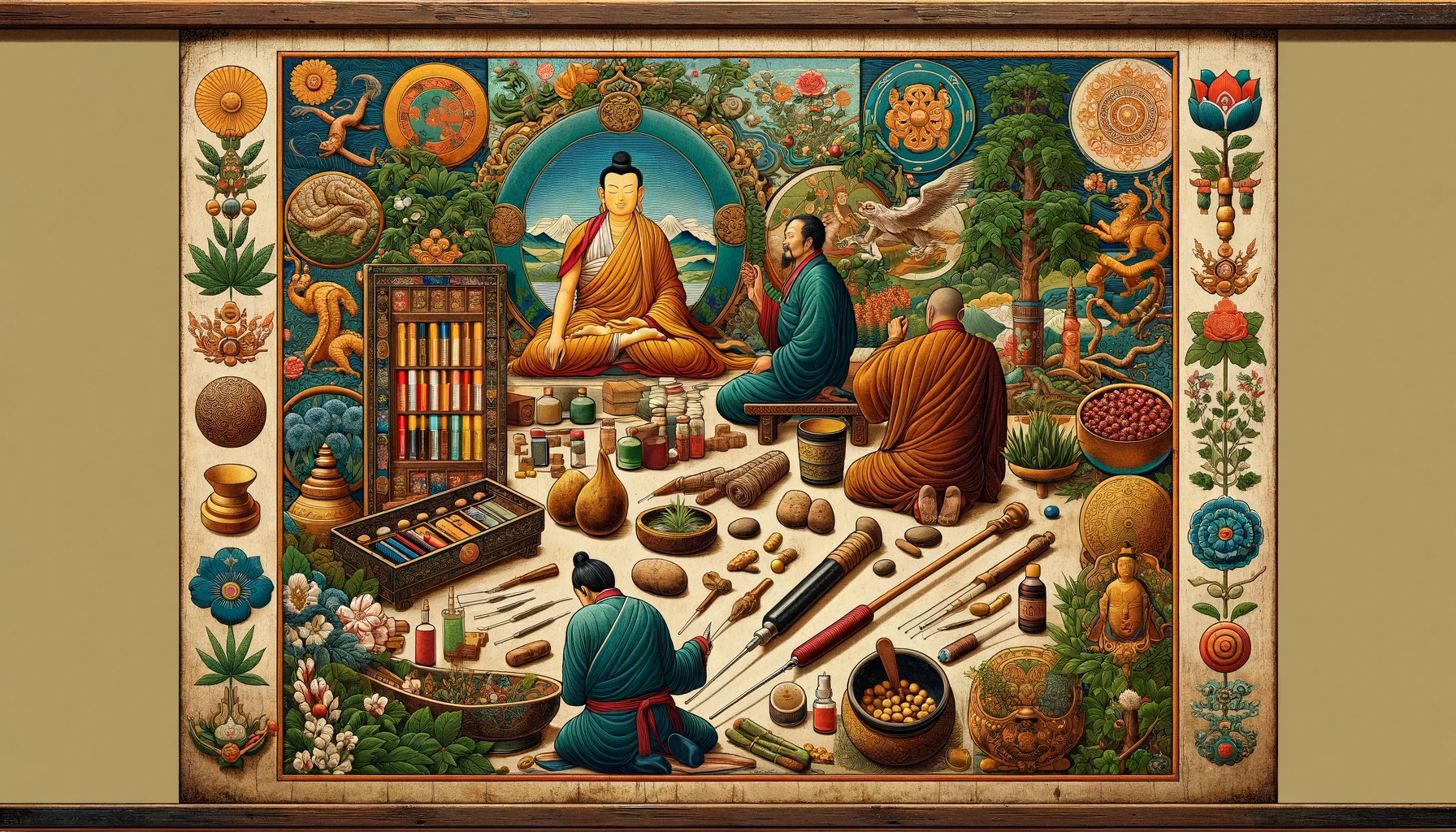Tibetan Medical Practices
Tibetan medicine, a gem in the realm of traditional healing methods, employs a holistic approach to diagnose and treat various ailments. This ancient practice builds on the pillars of interrogation, observation, and tactile examination, deeply rooted in the rich cultural heritage of Tibet.
Diagnosing with Precision
Heat and Cold Symptoms: The Core of Tibetan Diagnosis
Tibetan medical theory classifies diseases into two primary categories: heat symptoms and cold symptoms. This categorization guides practitioners in identifying the underlying imbalances causing ailments, ensuring a tailored and effective treatment plan.
A Spectrum of Therapeutic Techniques
Beyond Medicines: A Holistic Approach to Healing
While Tibetan medicine includes a range of herbal remedies, its therapeutic scope extends to various other techniques. These include acupuncture, bloodletting, moxibustion, and both cold and hot compresses, each playing a unique role in restoring balance and health.

The Power of Medicated Baths
The Quintessence of Tibetan Healing
Currently, the most celebrated therapy in traditional Tibetan medicine is the medicated bath. Known for its distinctive and characteristic approach, the medicated bath is a comprehensive treatment that addresses numerous health issues. It effectively dispels phlegm, resolves dampness, promotes blood circulation, strengthens the kidneys, and eliminates heat and superficial evils.
A Blend of Natural Ingredients
At the heart of the Tibetan medicated bath lies a blend of saline leaves, cypress branches, Chinese ephedra, yellow cuckoo, and wormwood. This potent mixture is further enhanced by over 30 rare medicinal materials, including muskiness and snowdrops, creating a powerful remedy.
Proven Efficacy in Treating Diverse Ailments
Broad Spectrum of Healing
Clinical evidence has shown that Tibetan medicated baths can effectively treat a wide array of diseases. These include rheumatism, rheumatoid arthritis, various skin conditions (such as psoriasis and scleroderma), disk hernias, hormonal imbalances, sciatica, post-delivery gout, limb disorders, and hemiplegia, to name a few.
A Legacy of Holistic Healing
Traditional Tibetan medicine represents a fusion of ancient wisdom and natural healing. Its unique diagnostic methods and the widespread use of medicated baths exemplify a deep understanding of the interconnection between the body, mind, and nature. This time-honoured medical practice continues to offer effective and natural solutions for a range of health issues, standing as a testament to the enduring power of traditional healing arts.
Tibetan Medicated Bath: A Deep Dive into Healing Practices
Tibetan medicated baths, an integral part of traditional Tibetan medicine, utilize three primary methods: liquid medicine baths, steam medicine treatments, and medicinal packing. Among these, the liquid medicine bath is the most commonly practised method.
The Process and Benefits of Liquid Medicine Baths
Immersive Healing Experience
In a liquid medicine bath, individuals immerse either their entire body or specific parts in a specially prepared medicinal solution. This immersive experience allows the active components of the medicine to penetrate the skin, reaching the dermis through the corneum and epidermis.
Internal and External Benefits
Once in the dermis, these medicinal components are absorbed by capillaries, leading to numerous health benefits. These include blood purification, softening of connective tissues, reduction of periosteum oedema, restoration of joint functions, and an overall boost in immunity.
Optimizing the Medicated Bath Experience
Duration and Frequency
A typical course of a Tibetan medicated bath usually spans 7 to 10 days. During this period, it is recommended to undergo the medicated bath once or twice daily, ideally once in the morning and once in the afternoon.
Temperature and Timing Controls
The water temperature is crucial and should be carefully maintained between 38℃ and 43℃. Each bath session should last between 22 to 25 minutes to ensure maximum efficacy.
Post-Bath Procedure
Following the bath, individuals should rest on a heated surface, such as a hot kang, to induce sweating for about 3-5 minutes. This step is vital as it contributes to the treatment’s overall effectiveness.
The Synergistic Effect of Medicine and Heat
The combined impact of the medicinal properties and the heat plays a significant role in the healing process. It aids in opening the pores, promoting blood circulation, dispelling rheumatism, and resolving dampness.
A Holistic Approach to Health
The Tibetan medicated bath stands as a testament to the holistic approach of traditional Tibetan medicine. It beautifully blends the therapeutic properties of natural ingredients with the healing power of heat, offering a unique and effective treatment for various ailments and enhancing overall well-being.

